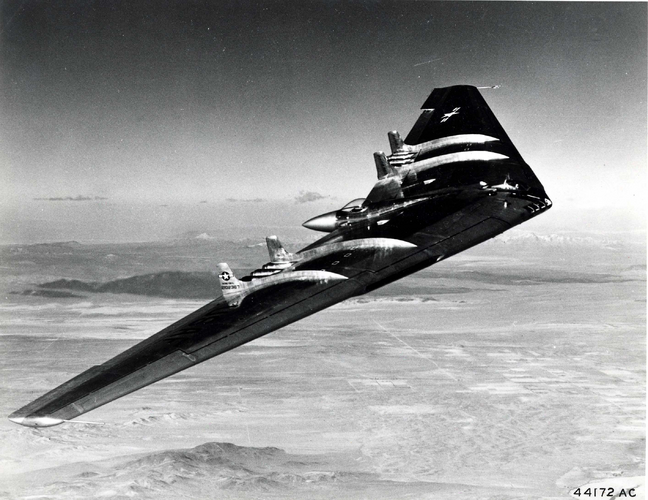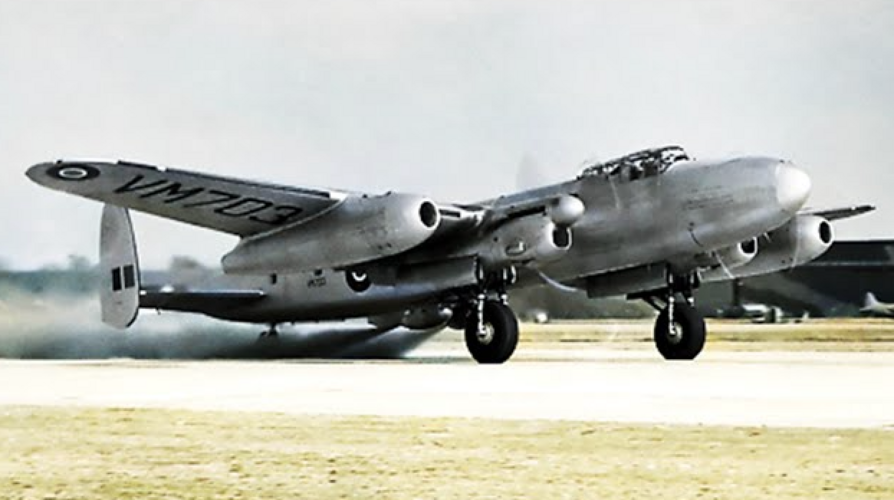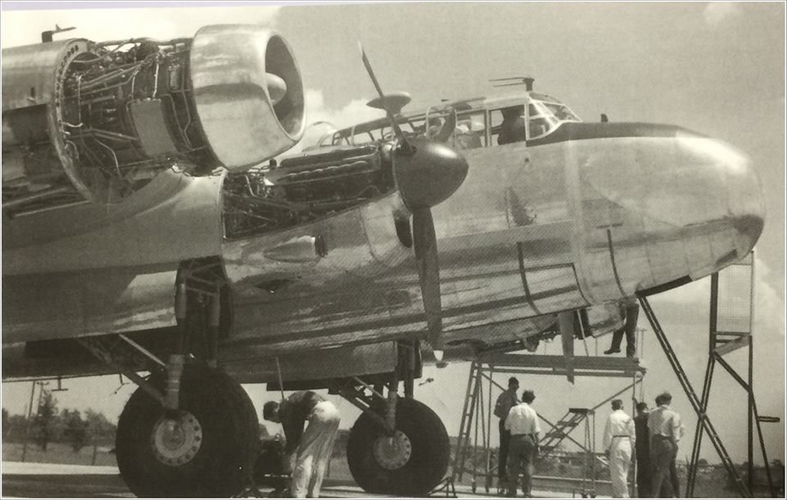Work on the (Phantom) prototypes began in January 1944, the first prototype flying on 26 January 1945 with test pilot Woodward Burke at the controls. This was just a brief hop, since only one engine had been installed; the first twin-engine flight took place a few days later. It was followed by the second prototype, with the two machines successfully passing company and initial Navy trials. On 21 July 1946, an XFD-1 began carrier trials on the USS FRANKLIN D. ROOSEVELT, making it the first US jet aircraft to operate off a carrier. The Navy had already placed a production order, for 100 aircraft, in March 1945.
Only 60 FH-1s (manufacturer code for McDonnell was changed from "D" to "H" in 1946) were actually built, since the end of the war ended any urgency for obtaining jet fighters, and though the Phantom was apparently a very pleasant aircraft to fly it was also underpowered, being not much faster than the best piston fighters. It also had much poorer range.
Even before the FH-1 Phantom went into production, McDonnell had been considering a "bigger and better" Phantom for the Navy, with higher performance and more range. In March 1945, only weeks after the first flight of the Phantom, the Navy ordered a single prototype of the improved machine as the "XF2D-1".
Of course, the larger XF2D-1 needed more power than the Phantom, and so the XF2D-1 was fitted with twin Westinghouse J34-WE-22 engines, with 13.3 kN (1,360 kgp / 3,000 lbf) kilograms thrust each -- almost twice the power of the Phantom's J-30s. Internal fuel supply was 3,320 liters (877 US gallons).
The initial flight of the XF2D-1 was from Saint Louis on 11 January 1947, with test pilot Robert Edholm at the controls. Trials proved satisfactory, and so the Navy ordered 56 production machines as the "F2H-1 Banshee" in May 1947, with the first rolled out in August 1948. The F2H-1 differed from the XF2D-1 in various details, such as a shallower tailfin extension and a flat tailplane, instead of the dihedral tailplane of the XF2D-1. Following carrier qualification on the USS FRANKLIN D. ROOSEVELT, the Banshee went into service late in 1948, replacing the FH-1 in squadron service.



